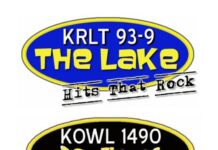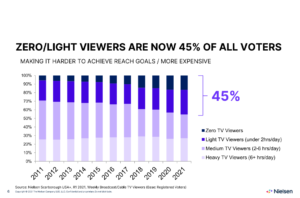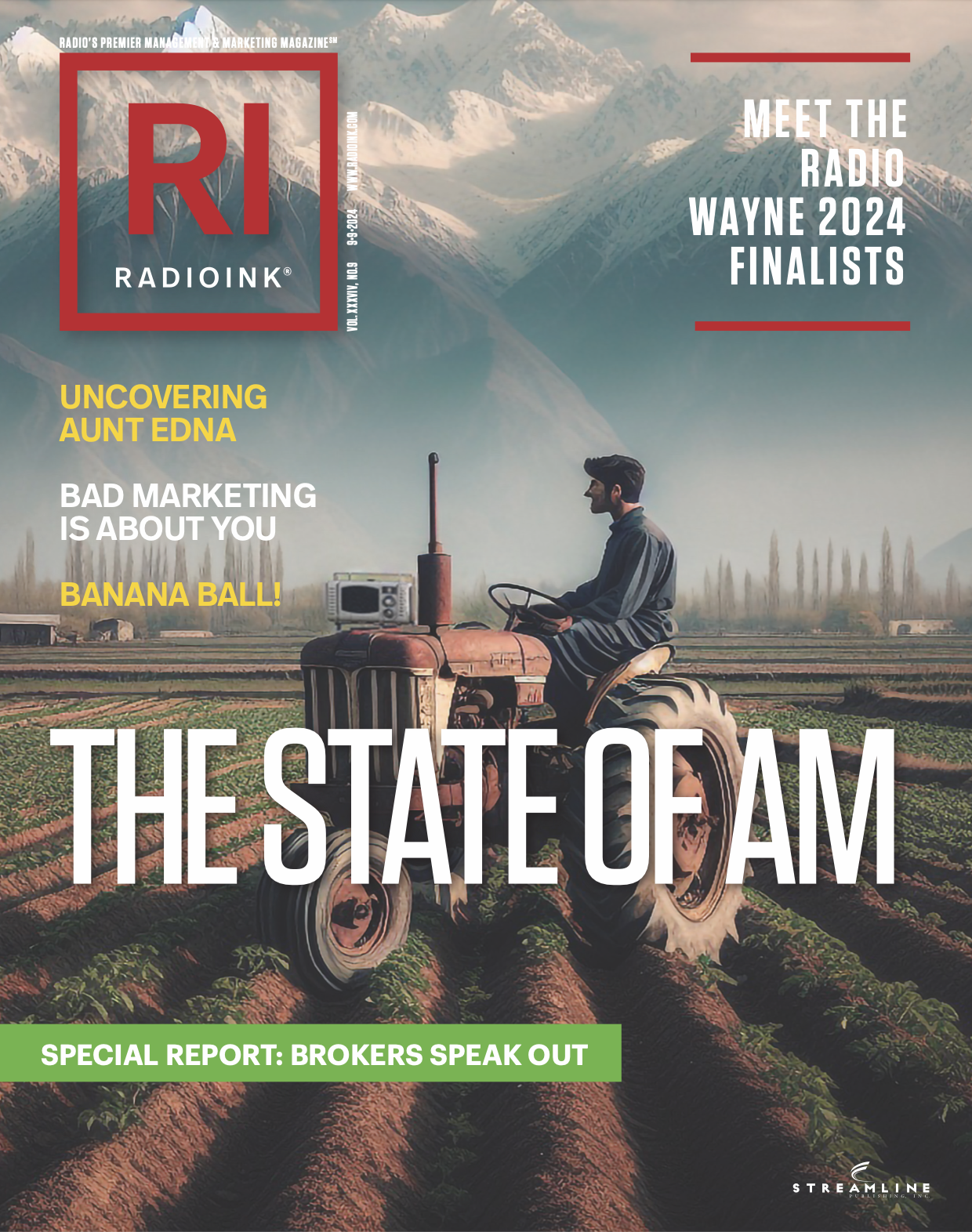
$7.8 Billion will be spent in the 2022 political advertising season, with 2.7 percent of that going to AM/FM radio. Nielson’s Tony Hereau, VP-Cross Platform Insights, believes there’s a disconnect as stats show AM/FM radio makes up 14 percent of total media usage.
“Looking at the media landscape usage is quite different than the way political advertising is spent with AM/FM radio. It’s really underutilized.”
Drilling down the numbers for a webinar with the American Association of Political Consultants, Hereau worked from a baseline showing Zero/Light TV viewers are on the rise.
“Basically, it says that campaigns that worked in the past, approaches that you have used for past campaigns…you are going to have to adapt, because the way people use media has adapted and evolved.”
The numbers show radio reaches 8 out 10 voters who are Zero/Light TV viewers.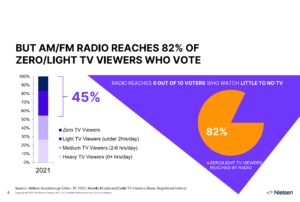
“This is AM/FM radio at the local level that you may already be advertising on. It has a pretty big impact on those Zero/Light TV viewers.”
“Radio reaches even more minority voters. Black and Hispanic local radio reaches 84% of those who watch little to no tv. Local radio is very effective in reaching those communities.”
“Other segments, Dads 25-54, Working Moms 18-49, GenX and Baby Boomers. Radio reaches about 89 percent of those key voter segments who are Zero/Light TV viewers.
The statistical “icing on the cake” is the reach radio has with reliable voters.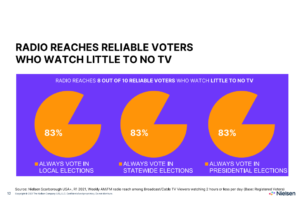
“What is important to political advertisers are those 4 out 4 voters who always vote in local, state and national elections. Radio reaches 8 out 10 of these reliable voters. So to assume that this is not a very important segment that you don’t need to pay attention to…these are the people who are showing up at the polls. In radio we call them listeners…it’s just that simple.”
This is when Hereau went “real world”, taking a closer look at the Georgia Senate runoff elections in January. Leading up to the election one out of every three TV ads in Atlanta were political. The TV inventory was tight because of the Christmas season. Democrats spent more on local radio and as it turned out they both won by narrow margins.
“Radio is uncluttered and it’s far easier to achieve an unfair share of voice for political advertisers because there is not that same pressure on inventory.”
Democrats managed to convince the swing voters.
Hereau, using a very sophisticated Nielsen tool, ‘Nielsen Media Impact’ set up a scenario where just 10 percent of the TV spend was shifted to radio. The number crunching was phenomenal.
If you would like the slides from the Nielsen presentation click HERE.
Watch the presentation HERE.
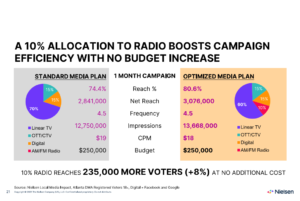
Even with 60 percent of the total media spend still with TV, the optimized plan delivered 235,000 more voters. The number of swing voters estimated in the runoff was 117,000. That shift of 10 percent to radio could have turned the tables the other way. 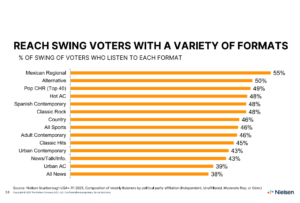
Radio is the key to reaching swing voters as the 2022 political season ramps-up.


